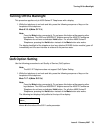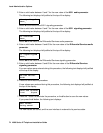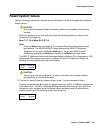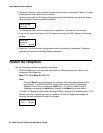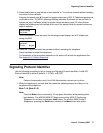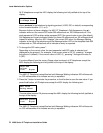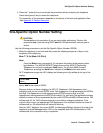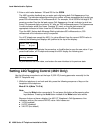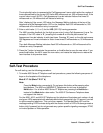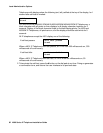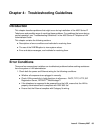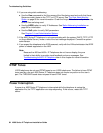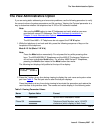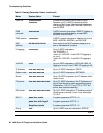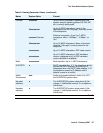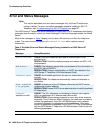
Self-Test Procedure
Issue 6 February 2007 81
The single-digit value is represented by Call Appearance Line a, which winks the number of
times represented by the current L2Q value 600 milliseconds on, 200 milliseconds off. If the
current value is zero (AUTO), Call Appearance Line a’s indicator flutters five times 50
milliseconds on, 50 milliseconds off instead of winking.
After “displaying” the current L2Q value, the Message Waiting indicator at the top of the
telephone and the Message button LED on the faceplate flash 500 milliseconds on, 500
milliseconds off to indicate an entry is expected.
2. Enter a valid value (1, 2, or 0) for the L2Q (802.1Q) framing parameter.
The 4601 provides feedback for the digit as you enter it using Call Appearance Line a. For
example, if the L2Q value is “2,” pressing the number 2 on the dial pad causes Call
Appearance Line a’s indicator to wink two times. Pressing “0” (zero) on the dial pad causes
Call Appearance Line a’s indicator to flutter three times 50 milliseconds on, 50 milliseconds
off.
Then both Message Waiting indicators flash 500 milliseconds on, 500 milliseconds off to
indicate an entry is expected.
3. Press the * button to terminate the procedure, or the # button to save the new value. If you
press the # button, the 4601 saves the new value, and resets the telephone to restore the
user interface to its previous state.
Self-Test Procedure
For self-testing, use the following procedure:
1. To invoke 4600 Series IP Telephone self-test procedures, press the following sequence of
keys on the faceplate of the telephone:
Mute 8 3 7 8 # (Mute T E S T #)
Note:
Note: Press the Mute button momentarily. Do not press this button while pressing other
keys/buttons. The 4630 and 4630SW IP Telephones do not have a dedicated
Hold button. For all other 4600 Series IP Telephones, pressing the Hold button
instead of the Mute button also works. The 4690 IP Conference Telephone does
not support this feature.
For the 4606, 4612, and 4624 IP Telephones, the telephone illuminates each column of red
and green LEDs associated with administrable buttons sequentially for 0.5 second, from left
to right across the telephone. This cycle then repeats. The Speaker/Mute LED and the
message waiting LED illuminate along with the closest column of LEDs. Buttons generate a
button click if pressed, but do not generate any system-specific signaling messages, DTMF,
or invoke Speaker or Mute operation.



